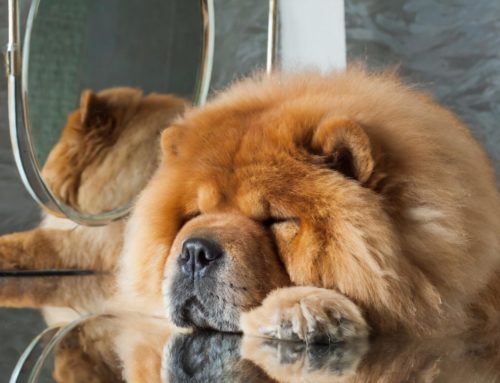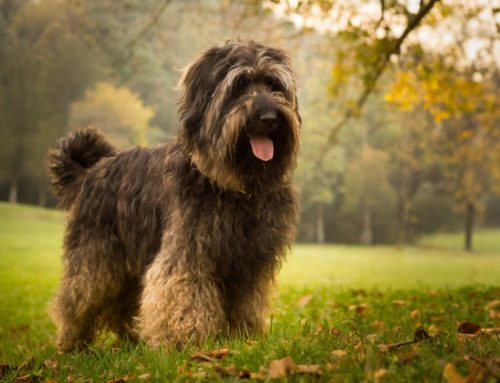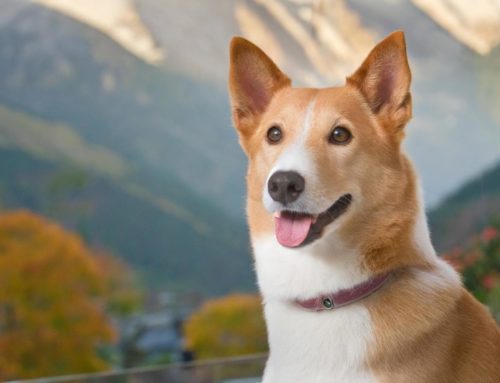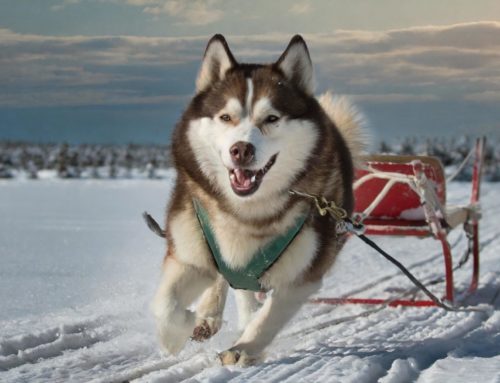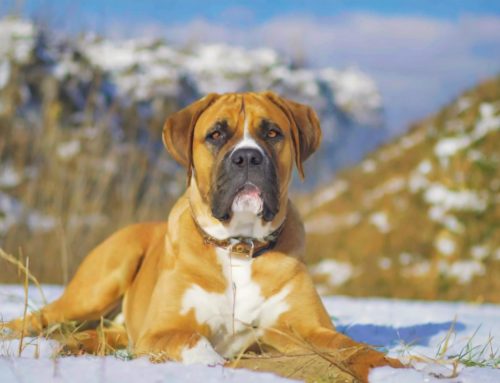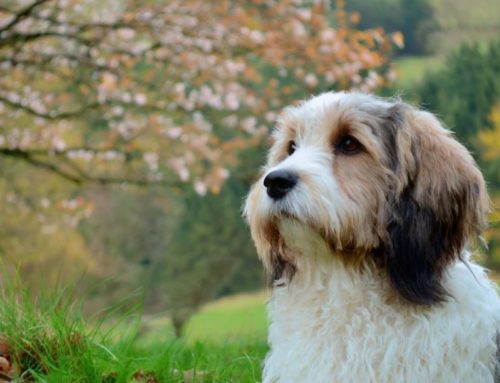
The history of the Bullmastiff begins in the late 19th century in England, where the breed was developed by crossing the old English Mastiff with the English Bulldog. This was done with the aim of creating a dog that was strong and muscular as well as agile and fast, to protect estates from poachers.
The Bullmastiff also became known as the “Night Dog” because of its role in guarding properties at night. In 1924, the breed was officially recognised, and not long after, the Bullmastiff Club Netherlands was founded, dedicated to the health and welfare of the breed.
The Bullmastiff grows explosively in the first year of life and matures late mentally, which can be a challenge in their training and socialisation. Their reticence in new situations and their strong protective instinct make them excellent guard dogs.
Despite their intimidating appearance, Bullmastiffs are loving family dogs that build strong bonds with their owners, especially children.
Officially recognised FCI Group 2 molossers
The Bullmastiff belongs to the FCI Group 2, which consists of Pinschers, Schnauzers, Molossers and Swiss Mountain Dogs. This breed is known for its strength and courage, characteristics it inherited from the Mastiff and the Bulldog, its ancestors.
Originally bred as a guard dog to protect against poachers, the Bullmastiff is known for its impressive stature, strength and loyal nature. They are affectionate within the family and have a natural protective instinct. The breed is also known for its intelligence and calmness, making them suitable for training and family life.
Coat and muscular appearance of the Bullmastiff
The Bullmastiff is a large breed, combining the robust build of the Mastiff type with the athleticism of the English Bulldog. This breed has an impressive shoulder height of 61 to 66 cm in males and 61 to 66 cm in females, with a weight ranging between 50 to 60 kg for males and 40 to 50 kg for females.
Their coat, which is short, straight and strong, can range in colours from sandy, red to brindle, often with a characteristic black mask. These dogs have a broad and deep body, underlining their strength and stamina. The Bullmastiff is known for its vigilance and was historically a favourite of gamekeepers for protecting against poachers.
They are naturally protective and can be reserved in new situations. Early socialisation and consistent training are essential to ensure a well-socialised dog that fits well in the family.
Hereditary diseases and conditions including hip dysplasia and elbow dysplasia
- Hip dysplasia: A joint disorder that can cause pain and discomfort.
- Elbow dysplasia: A similar condition to hip dysplasia, but in the elbows.
- Cancer: Several forms of cancer are relatively common in this breed.
- Hypothyroidism: A disorder of the thyroid gland that can cause various health problems.
- Heart diseases: Includes conditions such as dilating cardiomyopathy.
- Entropion/Ectropion: Eye conditions in which the eyelids curl inwards or outwards.
- Skin allergies: The Bullmastiff can be prone to various skin allergies.
- Stomach Torsion/Bloat/Gastric Dilatation-Volvulus (GDV): A life-threatening stomach disorder.
The character of the Bullmastiff
The Bullmastiff is a dog known as a loyal, brave and affectionate breed, with a natural protective instinct. These large dogs, whose males can weigh between 50 and 60 kilos and bitches are slightly lighter, tend to be calm and confident. Their coat, which needs some grooming during moulting, can range from sandy, red to brindle.
Despite their size and powerful appearance, Bullmastiffs are often gentle and loving, especially within the family. However, they can be reserved in new situations, especially in their first years of life when they are still maturing mentally. These dogs get along well with children and are known for their patience and tolerance.
As a watchdog, Bullmastiffs are alert and vigilant, but they are not known for excessive barking or aggressive behaviour. The dog’s nature is generally calm and confident, making them excellent companions for the right owner.
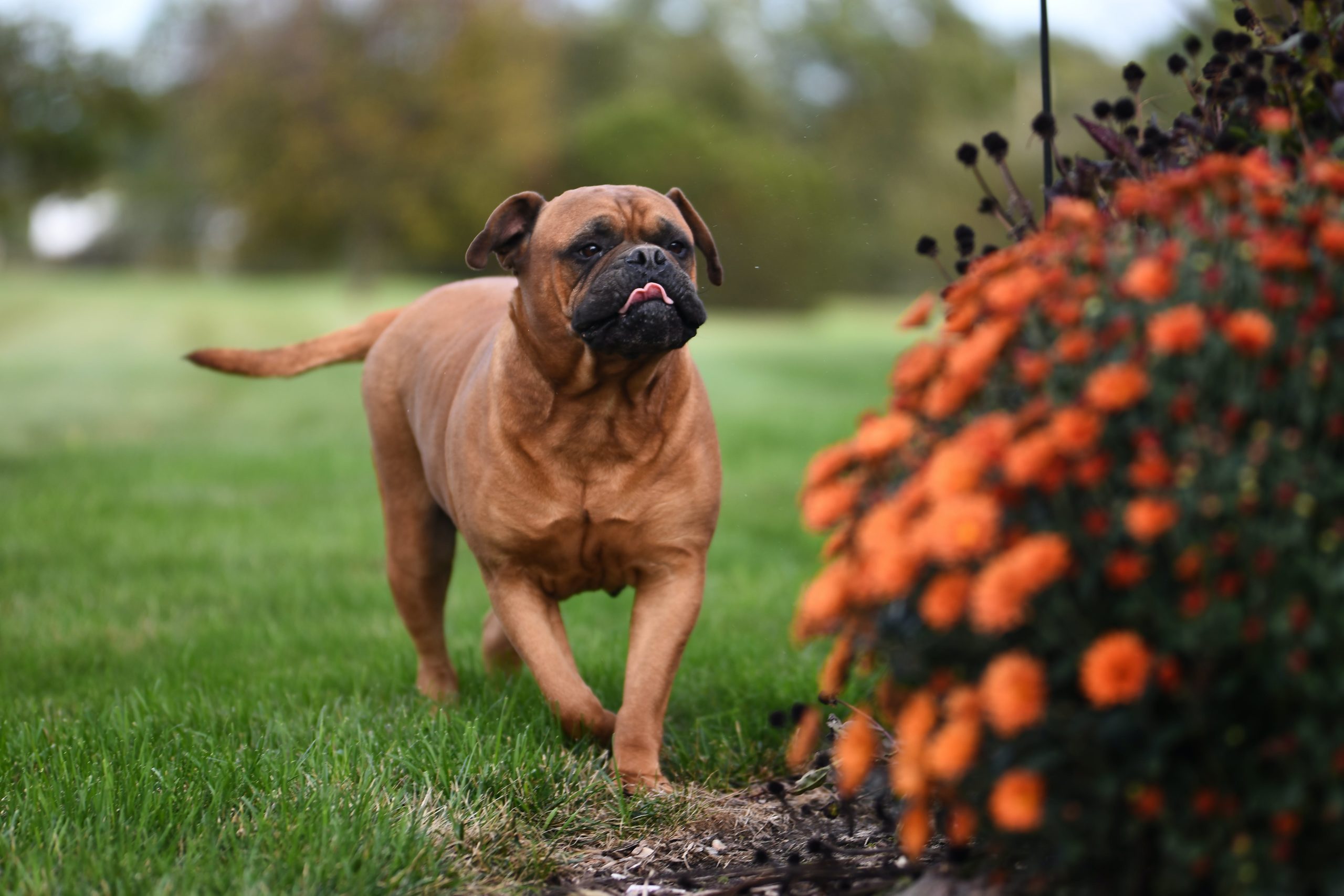
The care of the Bullmastiff
The care of the Bullmastiff is relatively easy, thanks in part to their short, straight and strong coat that requires little grooming. Their coat care is minimal, but regular inspection and maintenance are necessary to avoid unsightly lying spots. The breed’s recognised colours are sand, red and brindle, each with its own unique charm.
These large dogs, recognised by both the English Mastiff and Bulldog clubs, grow quickly in their first year of life, requiring special attention in their young years. The Bullmastiff is prone to certain health problems, so regular checkups at the breeder or through the Bullmastiff Association Netherlands are important.
As they are prone to drooling, it is helpful to clean their mouths regularly to avoid stains in the house.
Despite their size, these dogs are often loving and patient with children. Nevertheless, it is important to socialise and train them well, especially given their powerful build and protective nature. This breed needs consistent upbringing and responds well to positive reinforcement.
When it comes to exercise, Bullmastiffs have enough with moderate daily activity. Due to their size and strength, it is essential to have enough space for these dogs to exercise and play. Regular walks and play sessions help keep the Bullmastiff healthy and happy.
Early socialisation and upbringing of the Bullmastiff
A Bullmastiff’s education and socialisation are essential for its development, given that this is a large dog breed. Young Bullmastiffs grow rapidly, especially in the first year of life, with the weight of a male dog reaching between 40 and 50 kilos. This growth can lead to late mental maturity, which can make them reluctant in new situations as puppies.
It is important to socialise Bullmastiffs well from an early age, both with people and other dogs. As they are naturally a guard dog, like their ancestors the English Mastiff and Bulldog, it is crucial to teach them to react correctly in different situations. This requires a consistent and patient upbringing.
Bullmastiffs are generally gentle and carry a warm heart towards children, which makes them a suitable choice for families.
How much experience does a Bullmastiff require
A Bullmastiff can suit both experienced and inexperienced dog owners, but it requires specific considerations. For inexperienced owners, it is important to realise that a Bullmastiff is a large and strong breed that requires consistent training and socialisation. Without this, their natural vigilance and strength can be challenging.
For experienced dog owners familiar with large breeds, the Bullmastiff can be a good match, especially if they have experience training and managing large, strong dogs. Knowledge of the breed’s specific needs, such as the need for early socialisation and dealing with their guard instinct, is essential.
Is training necessary?
Training is essential for the Bullmastiff. Because of their large size and powerful build, it is important that they learn to obey from an early age. They must learn to respond to basic commands such as sit, stay and come here. This not only helps to keep the dog under control, but also strengthens the bond between the dog and the owner.
The Bullmastiff is known for its intelligent and independent nature, which means they can be stubborn at times. Consistent training helps establish respect and obedience. Positive reinforcement, such as praise and treats, are effective methods of encouraging desired behaviour.
How much exercise does a Bullmastiff need?
The Bullmastiff, a powerful and muscular breed, has a surprisingly moderate exercise requirement despite its impressive size. Daily, this dog needs about 30 to 40 minutes of physical activity to stay healthy and happy.
This time can be divided between walks on leash, play sessions in a securely fenced yard, or light training exercises. It is important to remember that the Bullmastiff, especially as a puppy and young dog, is susceptible to too much exercise because of its rapid growth and development, which can lead to joint problems.
A combination of physical and mental stimulation works best for this breed. Mental challenges can include obedience training, tracking, or interactive toys that require thinking.
This not only helps keep their bodies in shape, but also keeps their minds sharp and prevents boredom. Regular, moderate exercise is essential to keeping the Bullmastiff fit, controlling his weight, and promoting his overall well-being.
In addition to walks, playtime in a safe, fenced-in area can help to release their energy and boost their mental health. The Bullmastiff often enjoys games such as fetch.
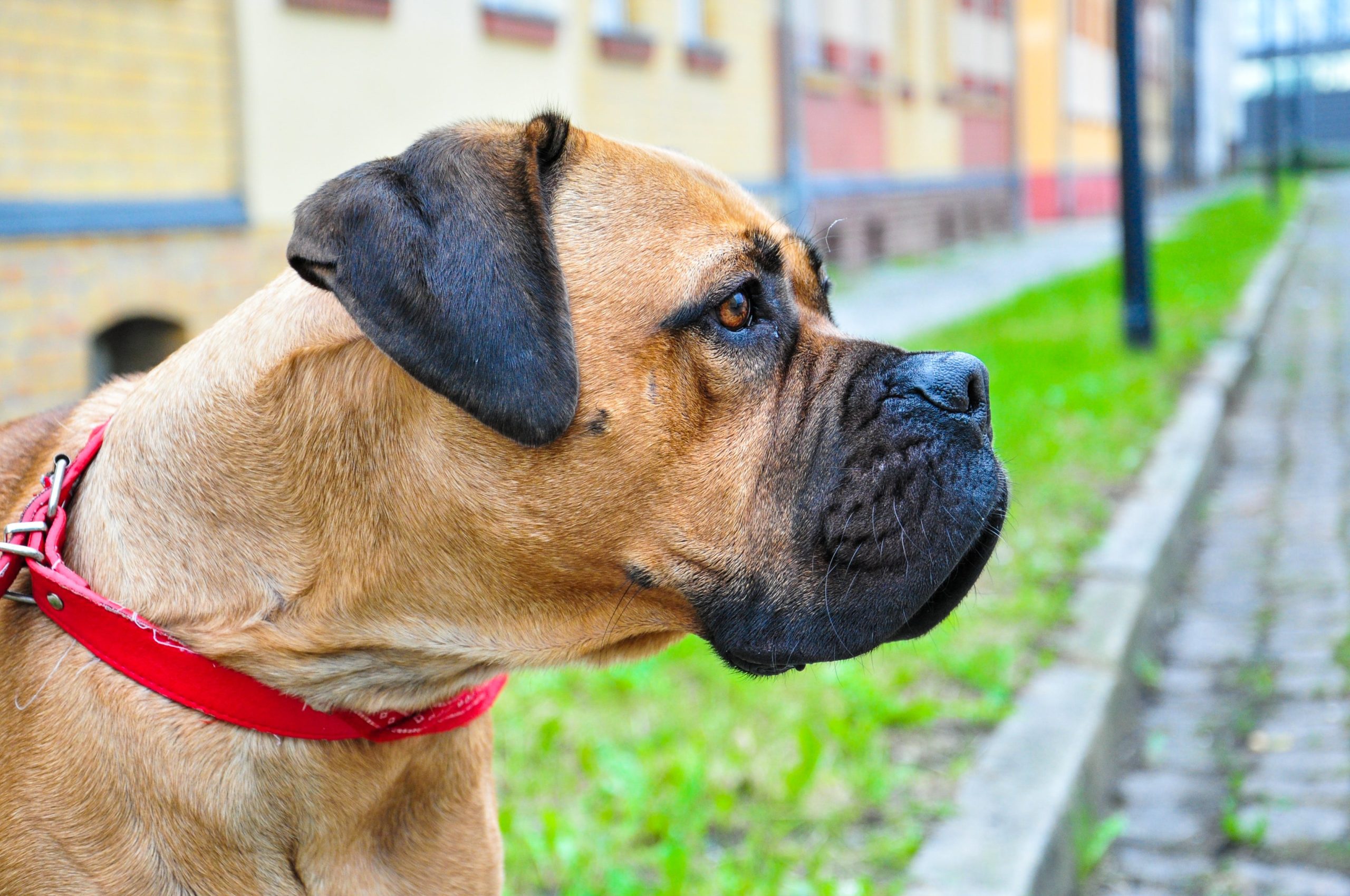
How is it getting along with children?
The Bullmastiff is known for its gentle and patient attitude towards children. This breed, large and robust, can be surprisingly cautious and protective towards younger family members. Their natural protective instinct makes them watchful and loyal companions for children.
However, due to their large size, it is always advisable to supervise interactions between Bullmastiffs and small children to avoid accidents, especially when the dog is still young and playful. It is important to teach both the dog and the children how to interact respectfully and safely.
Advantages of a Bullmastiff
- Protective: Known for their loyalty and protectiveness, they are excellent guard dogs.
- Good companions: They are affectionate and good with family members, including children.
- Low coat care: Their short coat requires relatively low maintenance.
- Calm temperament: They are known for their calm and stable nature.
Disadvantages of a Bullmastiff
- Health problems: Prone to conditions such as hip dysplasia and elbow dysplasia.
- Size: Their large size can be a challenge in smaller living spaces.
- Exercise needs: They need daily exercise, but not extremely much.
- Drooling: They can drool, which can be a drawback for some owners.
- Stubbornness: They can sometimes be stubborn, which requires consistent training.
How old a Bullmastiff gets
The life expectancy of a Bullmastiff varies, but generally they live about 8 to 10 years. This lifespan can be influenced by several factors, such as genetics, living conditions,
Price of a Bullmastiff
The cost for a Bullmastiff puppy in the U.S. typically falls between $2,000 and $3,500 when purchased from a reputable breeder. Here are the factors that might influence the price:
- Breeder’s Reputation: Higher prices are often quoted by breeders known for their champion lineages or the ability to prove the working capabilities of their Bullmastiffs.
- Pedigree and Registration: Bullmastiffs registered with the American Kennel Club (AKC) will command higher prices than those without registration.
- Geographic Location: Prices can vary based on the cost of living in different areas.
- Age of the Dog: Puppies generally cost more than adult dogs.
For those who admire the Bullmastiff’s blend of loyalty, protective instinct, and formidable size, here are a few breeds that might also appeal:
- Boxer: Known for its boundless energy and familial loyalty, with prices ranging from $1,000 to $2,000.
- Neapolitan Mastiff: This breed is a gentle giant, renowned for its protective nature, with puppies priced between $2,500 and $4,000.
- Dogue de Bordeaux: Another gentle giant with a distinctive look, puppies can range from $2,000 to $4,000.
Additional advice for prospective Bullmastiff owners includes:
- Comprehensive Research: Understanding the Bullmastiff’s needs, including space, lifestyle compatibility, and their need for early training and socialization, is crucial.
- Visiting the Breeder: It’s essential to visit the breeder to see the conditions in which the puppies are raised and to meet the parents.
- Training and Socialization: Start training and socializing early to mold a well-adjusted adult dog, focusing on positive reinforcement.
- Exercise Requirements: Despite their size, Bullmastiffs don’t require extensive exercise but do need regular walks and play sessions.
If you’re considering a Bullmastiff:
- Connect with Breed Clubs: The Bullmastiff Club of America can be a resource for finding reputable breeders and more information about the breed.
- Adoption: Consider adoption as a viable option. Though Bullmastiffs may be less common in shelters, you might find a great companion in need of a home.
Remember, owning a pet is a significant commitment; choosing a breed that matches your lifestyle is essential for both you and the dog’s happiness.
